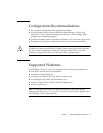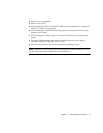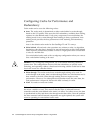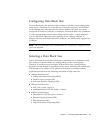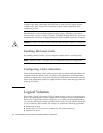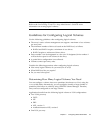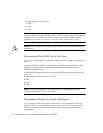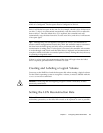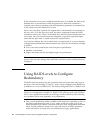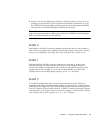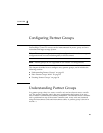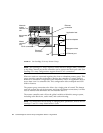
Chapter 2 Configuring Global Parameters 17
Note – Individual physical disk drives are not visible from the application host.
Refer to the Sun StorEdge T3 and T3+ Array Administrator’s Guide for more
information on creating logical volumes.
Guidelines for Configuring Logical Volumes
Use the following guidelines when configuring logical volumes:
■ The array’s native volume management can support a maximum of two volumes
per array unit.
■ The minimum number of drives is based on the RAID level, as follows:
■ RAID 0 and RAID 1 require a minimum of two drives.
■ RAID 5 requires a minimum of three drives.
■ Drive number 9 can be designated as a hot spare. If designated, drive number 9
will be the hot spare for all volumes in the array.
■ A partial drive configuration is not allowed.
■ Volumes cannot span array units.
Consider the following questions when configuring logical volumes:
■ How many logical volumes do you need (one or two)?
■ What RAID level do you require?
■ Do you need a hot spare?
Determining How Many Logical Volumes You Need
You can configure a volume into seven partitions (also known as slices) using the
format(1M) utility. Alternatively, you can configure virtually a large number of
partitions (also known as subdisks) using VERITAS Volume Manager. Therefore,
arrays are best configured as one large volume.
Applications benefit from the following logical volume or LUN configurations:
■ Two LUNs per array
■ OLTP
■ ISP
■ ERP
■ NFS, version 2
■ Attribute-intensive NFS, version 3
■ One LUN per array



